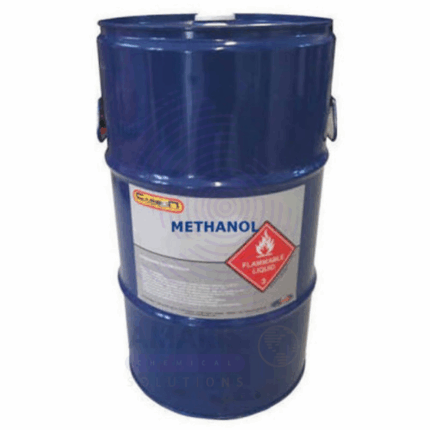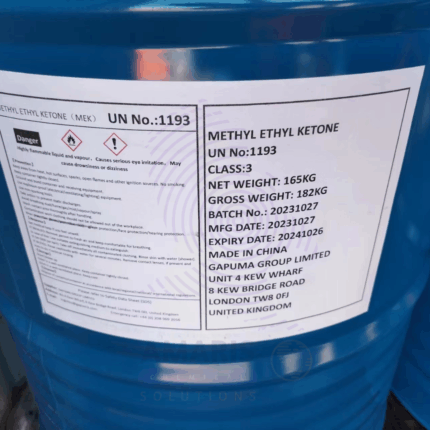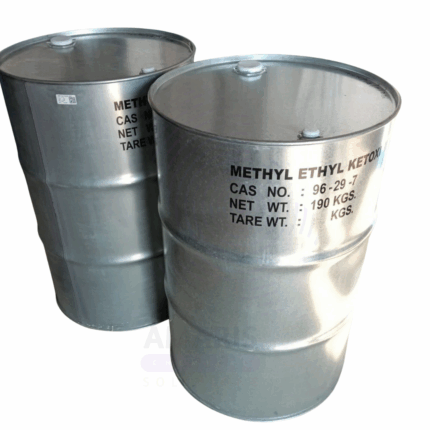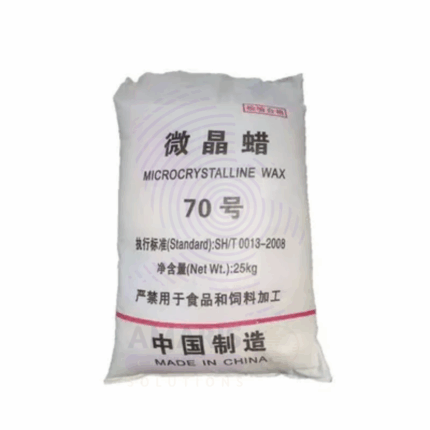
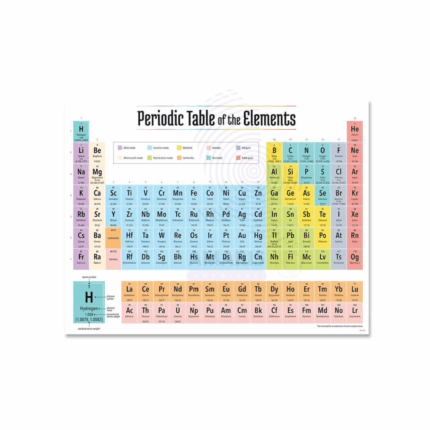
Texanol
Texanol is the commercial name for 2,2,4-Trimethyl-1,3-pentanediol monoisobutyrate, a high-performance coalescent and solvent widely used in latex paints, coatings, inks, and adhesives. It helps film formation at lower temperatures, enhances flow, improves gloss, and increases storage stability. Texanol is prized for its low odor, low volatility, and excellent balance between solvency and environmental compliance, making it a preferred coalescing agent in waterborne systems.
Primary Uses
Paints & Coatings Industry
Coalescing Agent: Essential in water-based paints to soften latex particles, enabling proper film formation during drying.
Gloss Enhancer: Improves surface appearance and gloss in decorative and industrial coatings.
Flow and Leveling Agent: Enhances application properties by promoting smoother surface finishes.
Low-VOC Formulations: Used in compliant coatings to reduce overall volatile organic compound (VOC) content.
Inks & Printing
Solvent in Water-Based Inks: Used to dissolve or disperse pigments, improve drying, and enhance print quality.
Film-Forming Additive: Aids in continuous film formation on substrates in waterborne ink systems.
Adhesives & Sealants
Plasticizer/Coalescent: Improves adhesion and flexibility in pressure-sensitive and construction adhesives.
Stabilizer: Prevents premature solidification and improves open time during application.
Secondary Uses
Textile Finishes
Binder Coalescent: Helps form flexible and durable films in textile coating and finishing formulations.
Cleaning Products
Solvent Additive: Occasionally used in specialty cleaning agents and polishes for its solvency and compatibility with aqueous systems.
Construction Materials
Binder Modifier: Used in construction emulsions and joint compounds to improve film integrity and workability.
Basic Identification Attributes
Chemical Name (IUPAC): 2,2,4-Trimethyl-1,3-pentanediol monoisobutyrate
Common/Trade Name: Texanol
CAS Number: 25265-77-4
HS Code: 2915.90.90
Synonyms: TMPD-MIB, TMPD monoisobutyrate, Coalescing solvent
Physical & Chemical Properties
Physical State: Clear, colorless liquid
Color & Odor: Faint ester-like odor
Boiling Point: Approx. 254 °C
Flash Point: Approx. 121 °C (closed cup)
Solubility: Slightly soluble in water; miscible with organic solvents
Density: Approx. 0.95 g/cm³
Vapor Pressure: Low (0.01 mmHg at 20 °C)
Safety & Hazard Attributes
GHS Classification: Not classified as hazardous under normal use
Toxicity: Low acute toxicity; may cause mild irritation to eyes or skin with prolonged contact
Exposure Limits: No specific occupational exposure limits established; general good practice applies
Storage & Handling Attributes
Storage Conditions: Store in cool, dry, well-ventilated area away from oxidizing agents
Container Type: Drums or bulk containers made of compatible material (e.g., HDPE, stainless steel)
Shelf Life: Minimum 12–24 months in sealed containers under recommended conditions
Handling Precautions: Avoid prolonged inhalation or contact; ensure proper ventilation when handling large volumes
Regulatory & Compliance Attributes
Compliant with REACH, OSHA, TSCA, and GHS regulations
Listed on major global chemical inventories (EU, US, Canada, Australia, Japan, etc.)
VOC-exempt status may apply under certain air quality management regulations
Used in formulations that comply with LEED, Green Seal, and EcoLabel standards
Environmental & Health Impact
Biodegradability: Readily biodegradable under aerobic conditions
Ecotoxicity: Low toxicity to aquatic organisms in typical use concentrations
Bioaccumulation: Not expected to bioaccumulate significantly
PPE Required: Gloves, goggles, and protective clothing for bulk handling
Handling Guidelines: Avoid direct contact with skin and eyes; use local exhaust ventilation if airborne concentrations are high
Storage Measures: Keep containers tightly closed and stored upright away from incompatible substances
First Aid Measures
Inhalation: Move to fresh air; seek medical attention if symptoms such as dizziness or headache occur
Skin Contact: Wash thoroughly with soap and water
Eye Contact: Flush eyes with water for at least 15 minutes; consult a physician if irritation persists
Ingestion: Rinse mouth; do not induce vomiting; seek immediate medical attention
Firefighting Measures
Fire Hazards: Combustible liquid
Extinguishing Media: Use foam, dry chemical, or CO₂; avoid water jets
Hazardous Combustion Products: Carbon monoxide, carbon dioxide, and other combustion gases


 Preservatives(food)
Preservatives(food) Flavor Enhancers
Flavor Enhancers Acidulants
Acidulants Sweeteners
Sweeteners Antioxidants
Antioxidants Colorants(food)
Colorants(food) Nutraceutical Ingredients (food)
Nutraceutical Ingredients (food) Nutrient Supplements
Nutrient Supplements Emulsifiers
Emulsifiers
 Collectors
Collectors Dust Suppressants
Dust Suppressants Explosives and Blasting Agents
Explosives and Blasting Agents Flocculants and Coagulants
Flocculants and Coagulants Frothers
Frothers Leaching Agents
Leaching Agents pH Modifiers
pH Modifiers Precious Metal Extraction Agents
Precious Metal Extraction Agents
 Antioxidants(plastic)
Antioxidants(plastic) Colorants (Pigments, Dyes)
Colorants (Pigments, Dyes) Fillers and Reinforcements
Fillers and Reinforcements Flame Retardants
Flame Retardants Monomers
Monomers Plasticizers
Plasticizers Polymerization Initiators
Polymerization Initiators Stabilizers (UV, Heat)
Stabilizers (UV, Heat)
 Antifoaming Agents
Antifoaming Agents Chelating Agents
Chelating Agents Coagulants and Flocculants
Coagulants and Flocculants Corrosion Inhibitors
Corrosion Inhibitors Disinfectants and Biocides
Disinfectants and Biocides Oxidizing Agents
Oxidizing Agents pH Adjusters
pH Adjusters Scale Inhibitors( water)
Scale Inhibitors( water)
 Antioxidants(cosmetic)
Antioxidants(cosmetic) Emollients
Emollients Fragrances and Essential Oils
Fragrances and Essential Oils Humectants
Humectants Preservatives
Preservatives Surfactants(cosmetic)
Surfactants(cosmetic) Thickeners
Thickeners UV Filters
UV Filters
 Fertilizers
Fertilizers Soil Conditioners
Soil Conditioners Plant Growth Regulators
Plant Growth Regulators Animal Feed Additives
Animal Feed Additives Biostimulants
Biostimulants Pesticides (Herbicides, Insecticides, Fungicides)
Pesticides (Herbicides, Insecticides, Fungicides)
 Active Pharmaceutical Ingredients (APIs)
Active Pharmaceutical Ingredients (APIs) Excipients
Excipients Solvents(pharmaceutical)
Solvents(pharmaceutical) Antibiotics
Antibiotics Antiseptics and Disinfectants
Antiseptics and Disinfectants Vaccine Adjuvants
Vaccine Adjuvants Nutraceutical Ingredients (pharmaceutical)
Nutraceutical Ingredients (pharmaceutical) Analgesics & Antipyretics
Analgesics & Antipyretics
 Analytical Reagents
Analytical Reagents Solvents(lab)
Solvents(lab) Chromatography Chemicals
Chromatography Chemicals Spectroscopy Reagents
Spectroscopy Reagents microbiology-and-cell-culture-reagents
microbiology-and-cell-culture-reagents Molecular Biology Reagents
Molecular Biology Reagents Biochemical Reagents
Biochemical Reagents Inorganic and Organic Standards
Inorganic and Organic Standards Laboratory Safety Chemicals
Laboratory Safety Chemicals Specialty Laboratory Chemicals(Special Laboratory Equipment)
Specialty Laboratory Chemicals(Special Laboratory Equipment)
 Demulsifiers
Demulsifiers Hydraulic Fracturing Fluids
Hydraulic Fracturing Fluids Scale Inhibitors(oil)
Scale Inhibitors(oil) Surfactants(oil)
Surfactants(oil) Drilling Fluids
Drilling Fluids
 Dyes and Pigments
Dyes and Pigments Bleaching Agents
Bleaching Agents Softening Agents
Softening Agents Finishing Agents
Finishing Agents Antistatic Agents
Antistatic Agents
 Admixtures
Admixtures Waterproofing Agents
Waterproofing Agents Sealants and Adhesives
Sealants and Adhesives Curing Compounds
Curing Compounds Concrete Repair Chemicals
Concrete Repair Chemicals Anti-Corrosion Coatings
Anti-Corrosion Coatings
 Surfactants(cleaning)
Surfactants(cleaning) Builders
Builders Enzymes
Enzymes Solvents (Cleaning)
Solvents (Cleaning) Fragrances
Fragrances
 Electronic Chemicals
Electronic Chemicals Catalysts
Catalysts Lubricants
Lubricants Photographic Chemicals
Photographic Chemicals Refrigerants
Refrigerants Automotive chemicals
Automotive chemicals Pyrotechnic Chemicals
Pyrotechnic Chemicals
 Biodegradable Surfactants
Biodegradable Surfactants Bio-based Solvents
Bio-based Solvents Renewable Polymers
Renewable Polymers Carbon Capture Chemicals
Carbon Capture Chemicals Wastewater Treatment Chemicals
Wastewater Treatment Chemicals
 Pigments
Pigments Solvents(paint)
Solvents(paint) Specialty Coatings
Specialty Coatings Binders/Resins
Binders/Resins Additives
Additives Driers
Driers Anti-Corrosion Agents
Anti-Corrosion Agents Functional Coatings
Functional Coatings Application-Specific Coatings
Application-Specific Coatings
 Fresh Herbs
Fresh Herbs Ground Spices
Ground Spices Whole Spices
Whole Spices Spice Blends
Spice Blends Dried Herbs
Dried Herbs
 Leavening Agents
Leavening Agents Dough Conditioners
Dough Conditioners Flour Treatments
Flour Treatments Fat Replacers
Fat Replacers Decoratives
Decoratives Preservatives(baking)
Preservatives(baking)
 Plasticizers & Softeners
Plasticizers & Softeners Reinforcing Agents
Reinforcing Agents Adhesion Promoters
Adhesion Promoters Vulcanizing Agents
Vulcanizing Agents Antidegradants
Antidegradants Blowing Agents
Blowing Agents Fillers & Extenders
Fillers & Extenders Accelerators & Retarders
Accelerators & Retarders



